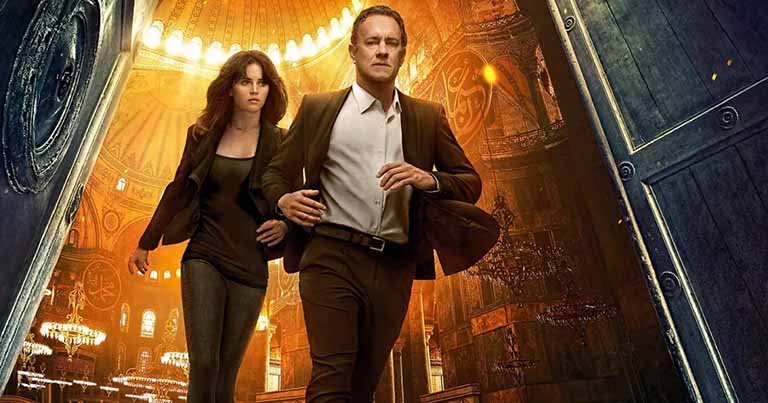While researching a forthcoming article, I discovered that a third film in the DaVinci Code universe slipped under my radar. Inferno, starring Tom Hanks as Robert Langdon, was released in 2016. This shocked me because I don’t remember it at all. But it’s also possible I was too busy watching Netflix’s Jessica Jones to notice. If you’re like me, and Inferno’s release is a giant-black hole in your memory, read ahead to see what you were missing. Please note there are some pretty big spoilers ahead for the movie.
Where does Inferno fit in the DaVinci Code universe?
The DaVinci Code movies have thus far been linear. The franchise starts with The DaVinci Code, continues with Angels & Demons, and concludes with Inferno.
The right ingredients for a successful movie
Inferno has all the right ingredients for a successful movie. It had a solid screenplay written by David Koepp. Koepp has had a successful career writing generation-defining films like Jurassic Park, Mission: Impossible, and Spider-man.
The cast was stacked with talent. Tom Hanks aside, Felicity Jones starred in the film, too, as Dr. Sienna Brooks. At the time, Jones had just been nominated for an Academy Award for her portrayal of Jane Wilde Hawking in The Theory of Everything. And legend Ron Howard was back to direct.
But like a recipe, just because you have the right ingredients, sometimes the execution poses problems.
The critical response and a suffering box office
A successful movie’s elements were there, but the audience’s reaction fell flat. The critical response to the movie was also largely negative.
So what went wrong?
It’s tricky to pin down why precisely a movie didn’t work. \Inferno’s plot (mainly based on Dan Brown’s book) was super-complicated and involved amnesia, a deadly virus, misbehaving billionaires, and of course, puzzles. , I also wonder if the film was ahead in talking about the response to a global pandemic – it could be a case of the right story but the wrong time.
One significant change from the book the movie was based on angered fans, but it makes sense from a movie storytelling standpoint. Ron Howard, the director, addressed the controversy and explained their reasoning in an interview with Bustle.
Changing the ending to Inferno, according to Howard, reflects the difference in medium. “The ending of a modern movie thriller needs to be quite a bit different than what was a terrific resolution on a literary level for the novel,” Howard tells Bustle. Though he doesn’t directly address the bleak nature of the original ending, the intent is clear: Hollywood thrillers need to have relatively satisfying endings. An ending where half the population is infected with a virus that makes them sterile is not satisfying, at least not to a mainstream movie audience. Says Howard, “All these things are done, but with an eye toward the movie audience and making it work as a standalone movie,” noting that if you do read the book before seeing the film, “you get something to talk about when it’s over.” Source: https://www.bustle.com/articles/191745-inferno-the-movie-vs-the-book-shows-the-major-change-that-was-made-videos#:~:text=In%20the%20movie%20Inferno%20%2C%20Robert,let%20it%20run%20its%20course.
By changing the ending of Inferno, Howard, and co. also left room for the Langdon universe to continue without venturing into the post-apocalyptic. Most of Earth’s population is still around, so the professor can continue to solve puzzles and save everything.
If you’re into the Robert Langdon universe, keep an eye out on the site. The Lost Symbol is premiering on Peacock soon, and I have a primer in the works.
Have you watched Inferno? Leave a comment or find me on Twitter to continue the conversation.
Note: This post originally appeared on AylaRuby.com before the hosting went poof. Since that site no longer exists with hosting, you get to visit the archives here. Please mind the cobwebs.

